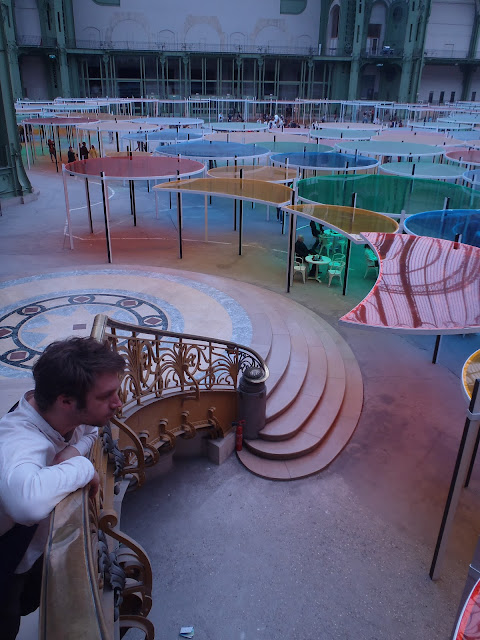I recently received an email from work colleagues saying, "We want to 'se faire' a Lebanese restaurant." (On a envie de se faire un restaurant libanais). From contextual clues, I gathered that it meant they wanted to go to a Lebanese restaurant. But just to be sure, I typed it into Google translate. The translation was: "We want to be a Lebanese restaurant." Teehee. Turns out google translate is not always great for informal phrases.
For those who know French may remember that faire means "to do" or "to make," and adding a "se" in front of a verb makes it reflexive. Thus we can assume se faire means "to make yourself..." This is the "real" definition, to make yourself into something is to become something or to be something (like the literal translation of wanting to be a restaurant).
But familiarly, se faire is used to mean quite a bit of other things. Like in the example, se faire + a place means to go to that place "se faire un restaurant" or "se faire un cinema," etc. I have been told that this is a common expression, although I have only heard it this one time so far. You can also have se faire + someone... which means something completely different, and in fact has two possible meanings. The first means to yell at/fight with/beat up that person. The second means to sleep with that person. So I can only guess what it means if my friend says they are going to se faire their neighbor. Being France, the second meaning is the more popular one.
For those who know French may remember that faire means "to do" or "to make," and adding a "se" in front of a verb makes it reflexive. Thus we can assume se faire means "to make yourself..." This is the "real" definition, to make yourself into something is to become something or to be something (like the literal translation of wanting to be a restaurant).
But familiarly, se faire is used to mean quite a bit of other things. Like in the example, se faire + a place means to go to that place "se faire un restaurant" or "se faire un cinema," etc. I have been told that this is a common expression, although I have only heard it this one time so far. You can also have se faire + someone... which means something completely different, and in fact has two possible meanings. The first means to yell at/fight with/beat up that person. The second means to sleep with that person. So I can only guess what it means if my friend says they are going to se faire their neighbor. Being France, the second meaning is the more popular one.









